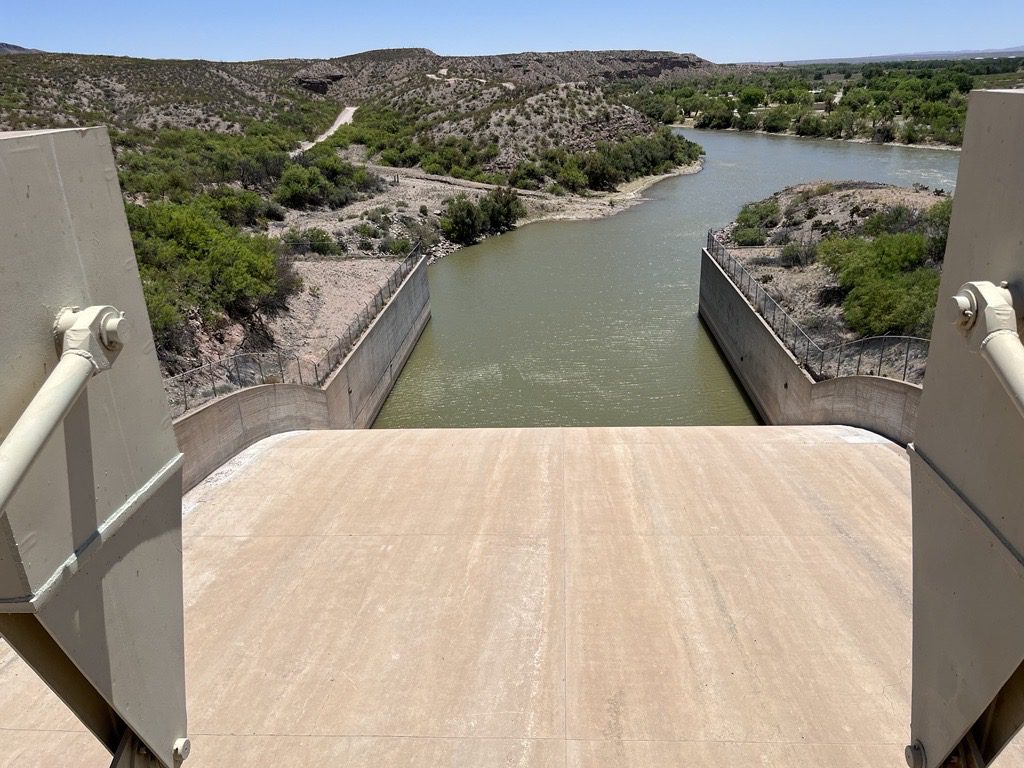- $60 million allocated for Rio Grande Basin water conservation and drought resilience.
- Focus on climate resiliency and water security below Elephant Butte Reservoir.
- Projects anticipated to save tens of thousands of acre-feet of water annually.
- Collaboration with local stakeholders to benefit endangered species.
May 14, 2024 — On Friday, Secretary of the Interior Deb Haaland announced a $60 million investment aimed at enhancing water conservation and drought resilience in the Rio Grande Basin . This funding, part of President Biden’s Investing in America agenda, seeks to bolster climate resiliency and secure water resources for communities downstream of Elephant Butte Reservoir extending into West Texas. The announcement was made in Albuquerque following a comprehensive briefing on the Rio Grande Project with state and local officials, irrigators, and other stakeholders.
. This funding, part of President Biden’s Investing in America agenda, seeks to bolster climate resiliency and secure water resources for communities downstream of Elephant Butte Reservoir extending into West Texas. The announcement was made in Albuquerque following a comprehensive briefing on the Rio Grande Project with state and local officials, irrigators, and other stakeholders.
Anticipated Water Savings of “Tens of Thousands” of Acre-Feet.
The Bureau of Reclamation, through cooperative agreements with the New Mexico Interstate Stream Commission and the National Fish and Wildlife Foundation, will collaborate with the Elephant Butte Irrigation District, El Paso County Water Improvement District #1, the International Boundary and Water Commission, and local stakeholders. These efforts are directed toward developing supplemental water projects or programs that will benefit the Rio Grande Project and protect endangered species in the basin. The anticipated water savings from these initiatives are projected to be tens of thousands of acre-feet per year.
“The Biden-Harris administration is committed to making communities more resilient to the impacts of climate change, including the Rio Grande basin and the people, wildlife, and economies that rely on it,” stated Secretary Haaland . “We continue to make smart investments through President Biden’s Investing in America agenda to safeguard water resources, invest in innovative water conservation strategies, and increase overall water efficiency throughout the West.”
. “We continue to make smart investments through President Biden’s Investing in America agenda to safeguard water resources, invest in innovative water conservation strategies, and increase overall water efficiency throughout the West.”
The Rio Grande, spanning over 1,200 miles, is a crucial water source for agricultural production and drinking water for rapidly growing cities and municipalities in New Mexico and Texas. It also supports eight federally recognized Tribes, habitats for migrating birds and other species, and a thriving tourism and outdoor recreation industry. Despite some improvement in hydrology in recent months, the region has faced a historic 23-year drought, leading to record low water levels throughout the basin. The Biden-Harris administration has been actively addressing ongoing drought and strengthening water security in the region.
Inflation Reduction Act Funding.
The announcement on Friday comes under the Inflation Reduction Act, which allocates $500 million for water management and conservation efforts in drought-stricken areas outside the Colorado River Basin. Further funding announcements for other basins will continue through the summer and fall. To date, the Biden-Harris administration has invested almost $59 million in the Rio Grande Basin, including over $30 million for repairing aging infrastructure to improve water supplies and delivery systems through Bipartisan Infrastructure Law funding.
“The Rio Grande, like many rivers in the West, has struggled with the impacts of severe drought for decades,” said Reclamation Commissioner Camille Calimlim Touton. “This funding from President Biden’s Investing in America agenda gives Reclamation and our partners the ability to explore options for stormwater capture and other activities to ease the impacts of climate change.”
In the Rio Grande, this funding will support efforts to increase storage at existing sediment dams and develop new off-channel storage to capture stormwater. This captured water will be utilized to recharge the aquifer, reduce irrigation demands, and improve riparian wildlife habitats for endangered species such as the Yellow-Billed Cuckoo and Southwest Willow Flycatcher. Additional projects will focus on improving irrigation infrastructure efficiency and supporting forbearance and fallowing programs.
The prolonged drought in the project area, coupled with heavy reliance on groundwater pumping, has led to a reduction in surface water supply, decreasing project efficiency and impacting wildlife habitats. The implementation of these programs and projects will benefit farmers in the Rio Grande Project, residents in Doña Ana and Sierra counties in New Mexico, El Paso County in Texas, and communities in the Republic of Mexico. These areas are identified as socioeconomically disadvantaged and vulnerable to climate change based on the Climate and Economic Justice Screening Tool.
Image:
The Rio Grande looking downstream from Caballo Dam , via Bureau of Reclamation news release.
, via Bureau of Reclamation news release.


Leave a Reply